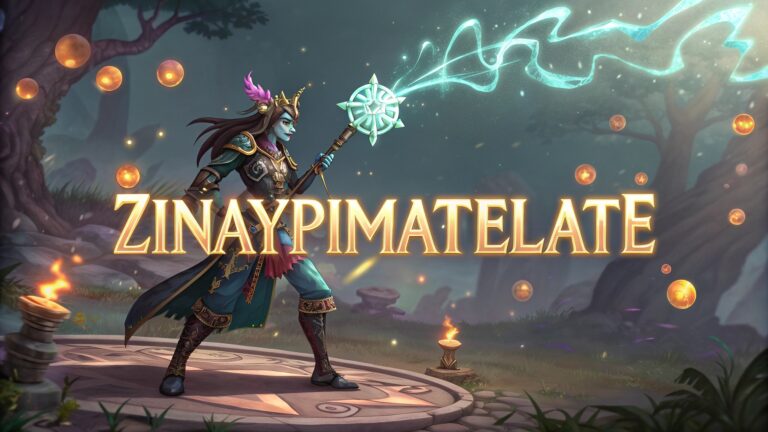In the realm of cryptography, codes and ciphers often shroud messages in secrecy, leaving curious minds to decipher their hidden meanings. One such enigmatic code that has piqued the interest of cryptographers and enthusiasts alike is “314159u”. In this article, we embark on a journey to unravel the mysteries concealed within this cryptic sequence of characters.
Origins of 314159u:
To understand the significance of “314159u,” it’s essential to delve into its origins. While its exact inception remains uncertain, some speculate that it may have emerged from the realm of internet forums, gaming communities, or even clandestine communication channels. Others suggest mathematical underpinnings, drawing connections to the ubiquitous mathematical constant π (pi) and the letter “u,” which could signify an unknown variable or unit.
Cryptic Interpretations:
Interpreting “314159u” poses a considerable challenge, as it lacks context and overt meaning. Cryptanalysts have explored various avenues in their quest to decode its message. Some have proposed linguistic analyses, attempting to uncover hidden messages or patterns within the characters themselves. Others have scrutinized numerical sequences and mathematical properties, searching for correlations with known mathematical concepts or cryptographic techniques.
Speculations and Theories:
As with many cryptographic puzzles, a plethora of speculations and theories surround “314159u.” Some speculate that it may be a passphrase or encryption key, guarding access to hidden information or resources.
Others posit that it could serve as a marker or identifier within a larger cryptographic scheme, waiting to be unlocked by those with the requisite knowledge or insight. Still, others entertain the possibility of it being a red herring, designed to confound and mislead would-be codebreakers.
Community Collaboration:
In the spirit of collaborative problem-solving, communities of cryptographers and puzzle enthusiasts have banded together to crack the code of “314159u.” Online forums, social media platforms, and dedicated websites serve as hubs for sharing insights, brainstorming ideas, and collectively tackling the challenge. Through the collective efforts of these communities, new perspectives and breakthroughs may emerge, inching closer to unraveling the enigma of “314159u.”
Ethical Considerations:
While the allure of cracking cryptographic codes can be tantalizing, it’s crucial to consider the ethical implications of such endeavors. Respect for privacy, intellectual property rights, and legal boundaries should guide the actions of codebreakers and cryptanalysts.
Engaging in cryptanalysis without proper authorization or ethical oversight can lead to unintended consequences and legal repercussions. Responsible and ethical conduct is paramount in the pursuit of cryptographic challenges such as “314159u.”
Historical Significance of Cryptographic Codes:
Throughout history, cryptographic codes have played a pivotal role in shaping the course of human events. From ancient civilizations like Egypt and Greece to pivotal moments in wartime communications during World War II, cryptographic codes have been employed to safeguard secrets, transmit sensitive information, and gain strategic advantages. Exploring the historical significance of cryptographic codes allows us to appreciate their enduring relevance and impact on various domains, including diplomacy, military operations, commerce, and espionage.
Mathematical Foundations of Cryptography:
At the core of cryptography lies a rich tapestry of mathematical concepts and principles. From number theory and algebra to probability theory and computational complexity, the mathematical foundations of cryptography provide the theoretical underpinnings for designing secure cryptographic systems.
Understanding these mathematical principles is essential for assessing the strength and resilience of cryptographic algorithms, as well as for developing new cryptographic techniques capable of withstanding modern threats, such as quantum computing.
Cryptanalysis Techniques: Breaking the Code:
Cryptanalysis, the art and science of breaking cryptographic codes, encompasses a wide array of techniques and methodologies. From classical methods like frequency analysis, which exploits patterns in the frequency of letters or symbols in a message, to more sophisticated approaches such as differential cryptanalysis and brute-force attacks, cryptanalysts employ a diverse toolkit to unravel encrypted messages and uncover their underlying meanings.
Exploring cryptanalysis techniques provides insights into both the vulnerabilities of cryptographic systems and the methods used to strengthen them against potential attacks.
Applications of Cryptography in Modern Society:
In today’s interconnected world, cryptography serves as a cornerstone of modern society, underpinning a wide range of applications and technologies.
From secure communication protocols like SSL/TLS used in online banking and e-commerce to cryptographic algorithms powering digital signatures and authentication mechanisms, cryptography plays a crucial role in safeguarding sensitive information, ensuring privacy, and enabling trust in digital transactions.
Exploring the diverse applications of cryptography sheds light on its pervasive influence across various sectors, including finance, healthcare, cybersecurity, and beyond.
Future Frontiers: Emerging Trends in Cryptography:
As technology continues to evolve at a rapid pace, the field of cryptography faces new challenges and opportunities on the horizon. Emerging trends such as quantum computing, post-quantum cryptography, blockchain technology, and homomorphic encryption promise to reshape the landscape of cryptography in the years to come.
Anticipating these future frontiers enables researchers, practitioners, and policymakers to stay ahead of the curve, developing novel cryptographic solutions capable of addressing emerging threats and unlocking new possibilities for secure communication, privacy-preserving data analytics, and decentralized trust mechanisms.
Cryptographic Protocols and Standards:
Delve into the various cryptographic protocols and standards that govern secure communication and data exchange across networks and systems. Explore widely adopted standards such as RSA, AES, and SHA, as well as protocols like SSL/TLS, SSH, and IPsec, examining their design principles, security features, and real-world applications.
Cryptography in the Era of Big Data and IoT:
Examine the intersection of cryptography with emerging technologies such as big data analytics and the Internet of Things (IoT). Explore how cryptographic techniques are applied to secure data storage, transmission, and processing in large-scale distributed systems, as well as in the context of IoT devices and networks. Discuss challenges and opportunities in ensuring the security and privacy of data in the era of ubiquitous connectivity and massive data volumes.
Conclusion:
In the ever-evolving landscape of cryptography, codes like “314159u” serve as intriguing puzzles that challenge the ingenuity and perseverance of enthusiasts and experts alike. While the true meaning and significance of “314159u” may elude us for now, the journey of exploration and discovery continues unabated.
Through collaborative efforts, rigorous analysis, and ethical conduct, we inch closer to unraveling the mysteries concealed within this cryptic code, shedding light on its secrets one step at a time.





















+ There are no comments
Add yours